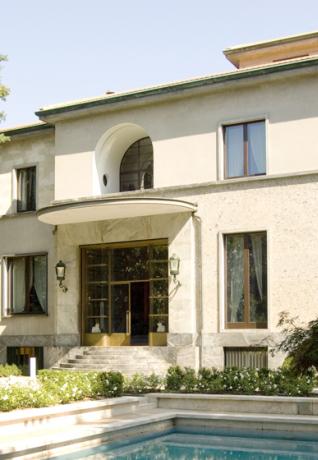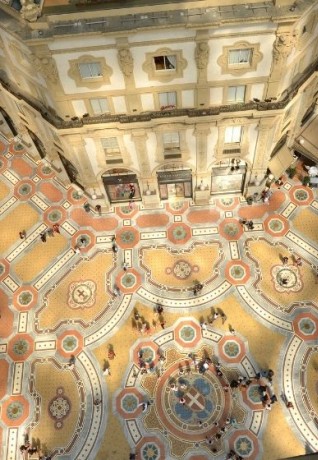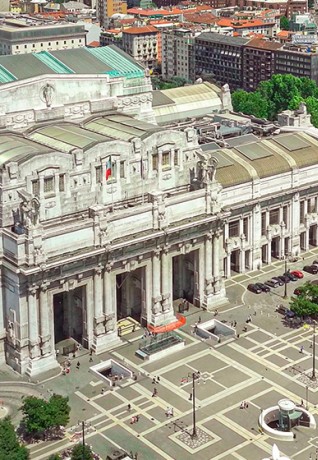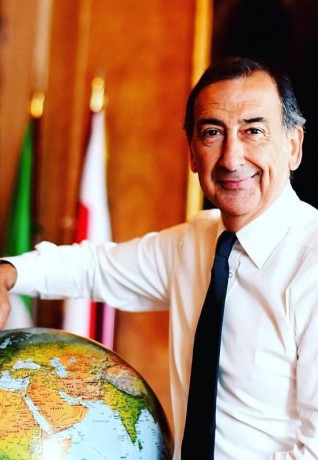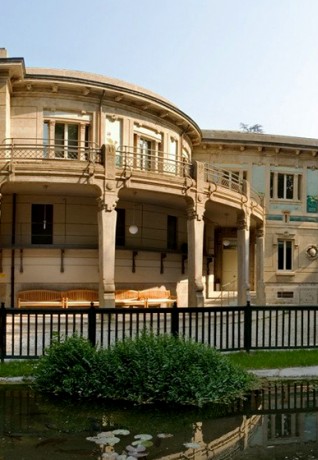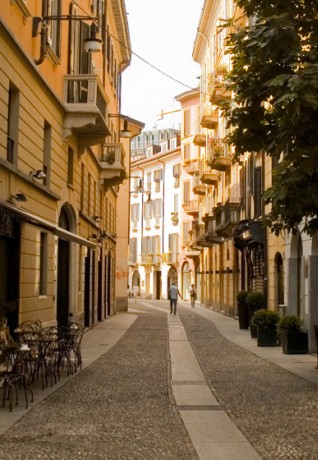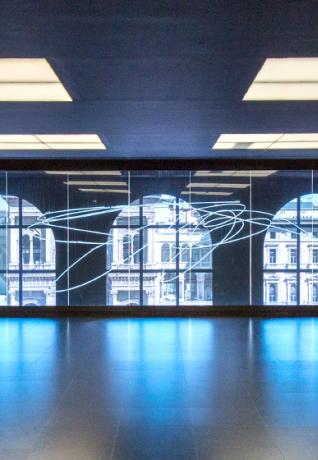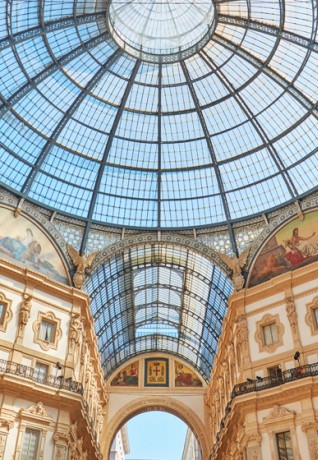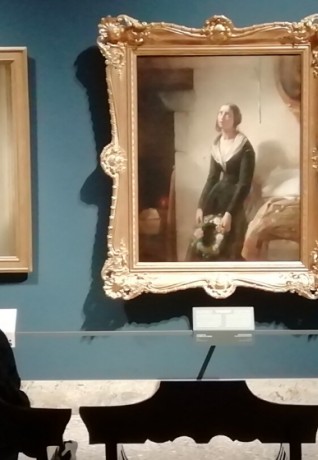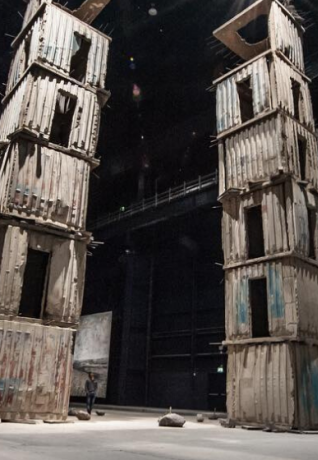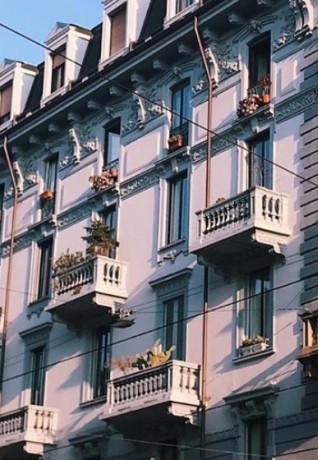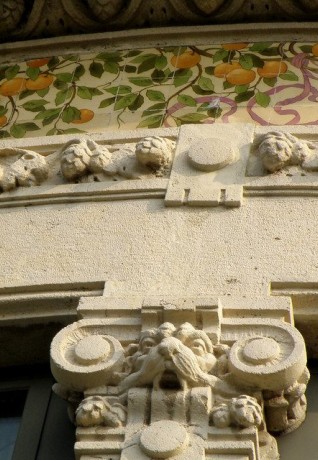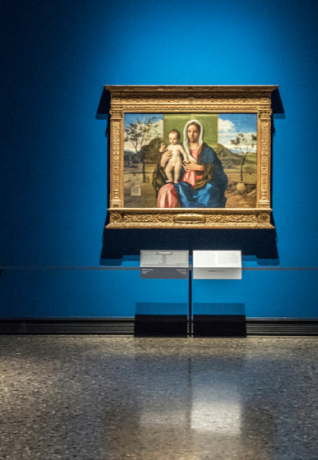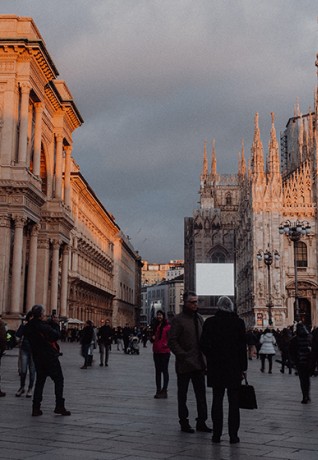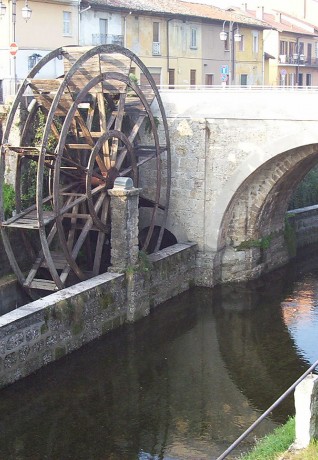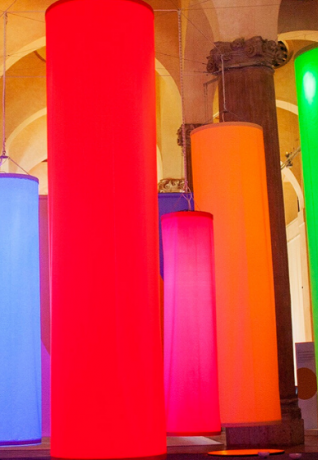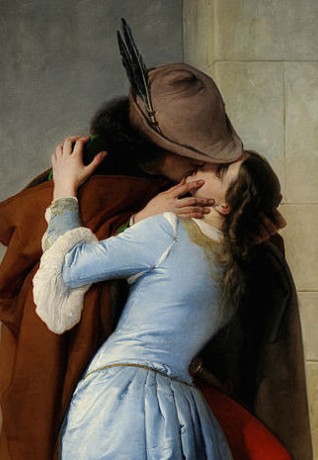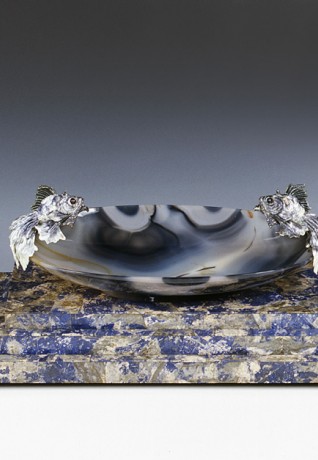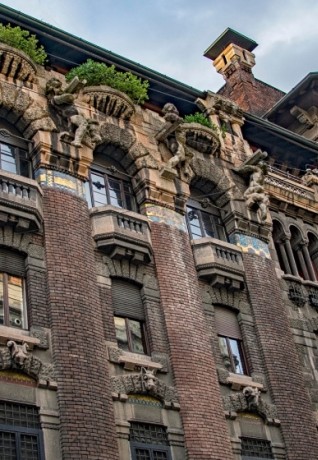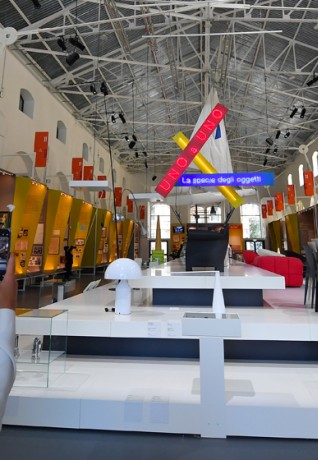Street art in Milano: ORME ORTICA MEMORIA
The first district where the memory of the 20th century is painted on the walls
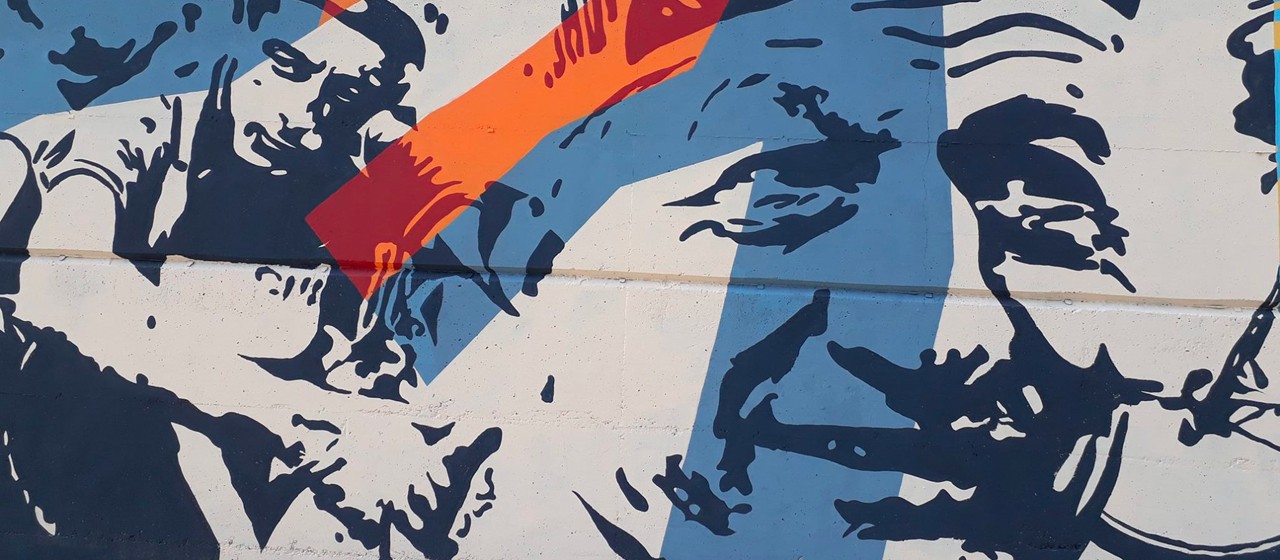
- The wall of the women who have made the 20th century great
- The wall of legality
- Popular music
- The wall of cooperation
- The wall of the partisan and the bishop
- The words of freedom
- Mural of sport
- Mural of Labour
- Ortica comes from 'garden'
- Dedicated to anti-fascists and political deportees
- The Alpini in the two wars
- Or.Me: in the footsteps of the immigrants
A new permanent museum in Milano, accessible to all, free of charge. A cultural district where you can walk and meet history at the same time. OR.ME Ortica Memoria: 20 works of urban art among the largest in Italy, by the artists collective OrticaNoodles, in which each mural – in a work born in cooperation with the neighbourhood’s residents - tells a story of Twentieth century Milano.
Walk with us through the streets of the Ortica district and meet the history of the 20th century.
WHERE: Istituto Alberghiero Pasolini, wing of the school building on via Trentacoste 9-5
The twentieth century was the century of women, the century in which they reached milestones that were unattainable until a short while ago. They have won the freedom to choose their lives in work, in marriage and, for the first time in history, in motherhood.
They struggled to get all this. They sweated to show that they could be all they could dream.
And this thanks also to the illustrious examples also present in the city of Milano that have inspired other women.
This mural is dedicated to them, who have taught us so much, who we have admired. They have taken care of us, looked after us and taught us that if you really want tt, everything is possible.
Here are depicted: Camilla Cederna, Alda Merini, Ersilia Majno, Alessandrina Ravizza, Anna Kuliscioff, Antonia Pozzi, Maria Maddalena Rossi, Liliana Segre.
WHERE: Railway bridge Via Rosso di San Secondo corner Via San Faustino
The work is dedicated to those who fought, and often lost their lives, in the name of legality, of a higher sense of justice.
Beyond any ideology, beyond all convenience, with perseverance as admirable as frequently misunderstood, they are the protagonists of unequal, courageous and noble but obstinate struggles, tenacious, rigorous and lucid against a real enemy, which often led to a tragic end.
Here are represented: Giorgio Ambrosoli (lawyer, killed 11 July 1979), General Carlo Alberto dalla Chiesa (killed by the mafia on 3 September 1982), Emilio Alessandrini (magistrate, killed by terrorists on 29 January 1979), Mauro Brutto (journalist, killed in 1978), Walter Tobagi (journalist and writer, killed by terrorists on 28 May 1980), Tina Anselmi (politics and partisan), Lea Garofalo (judicial witness, killed by the 'Ndrangheta on November 24, 2009).
WHERE: along the railway bridge of via San Faustino (near via San Faustino 10)
In music, the Ortica is one of the most sung Milanese neighbourhoods along with Porta Romana and the Navigli. It is well known that the area was and is full of trattorias and taverns whose customers, between a glass of wine and a slice of salami, have always lingered in the song, beautiful or ugly.
The meeting place of these singers was the old Trattoria del Gatto Nero in via Ortica, in a building founded in the fifteenth century. Here it is the tradition that every evening or almost someone would come to cheer up the evenings, and often it did not close until dawn came knocking on the shutters.
The colourful mural is dedicated to the most prestigious and well-known authors/performers of the Milanese song, as Ornella Vanoni, Enzo Jannacci, Dario Fo, Ivan Della Mea, Giorgio Strehler, Giorgio Gaber and Nanni Svampa.
WHERE: Cooperativa Edificatrice Ortica via San Faustino 5
Work dedicated to the Italian Cooperative Movement.
The historical photo (dated 1914) from which the mural was taken portrays the members of the Section of Cinisello of the Società di Miglioramento e Resistenza tra i Lavoranti Muratori di Milano, a construction cooperative founded in 1887. The socio-cultural identity of the cooperative is rendered by the two paintings representing Jesus Christ and Charles Marx.
WHERE: residential building on via F. Villa 6 on the side of via Giovanni Antonio Amadeo (facing Via Giovanni Antonio Amadeo 57)
The Italian Liberation Day after the Second World War, on April 25th, is one of the key events of the Ortica district. This is why we wanted to pay tribute to this work to two people who have frequented the neighbourhood in the dark periods of fascism and heroics times of resistance, and who have witnessed with their lives what they believe in: Bishop Marco Ferrari and partisan Luigi Morandi.
WHERE: Cavalcavia Buccari
On April 25, 1945, the partisan insurrections put an end, a few days before the arrival of the allied troops, to the Nazi-fascist occupation of Milan and Turin. It is the end of the dictatorship of Mussolini, of the Second World War, of the civil war. And it is on the 70th anniversary of that event that this small masonry work is born, that in its small represents the beginning of the project Or.Me Ortica Memoria.
It represents the words chosen by the students of the schools of the district and that, in their opinion, better represent freedom and resistance.
WHERE: Società Sportiva Scarioni, via Tucidide corner via Cavriana
Mens sana in corpore sano, according to the old Roman saying.
Sport has always been important in Italy, and Milan stands by this. So much so that its football teams, A.C. Milan and Inter Milan, have always been at the top of the rankings and San Siro stadium is knows as football’s La Scala.
That is the mural’s inspiration, paying homage to the city’s hallowed sides and representing two of their flags: Sandro Mazzola and Gianni Rivera.
But there is more to it than just football: athletics - a symbol of determination and effort - swimming, tennis, boxing, cycling, artistic gymnastics, skiing.
In choosing the sportsmen represented, the intention was to highlight those that in their lives have not only given reputation to the sport for which they have competed, but have also tried to give testimony to the civil value that sports can embody in a healthy society, becoming promoters of important social battles.
The following are depicted: Gianni Rivera, Sandro Mazzola, Pietro Mennea, Gino Bartali, Fausto Coppi, Sara Simeoni, Novella Calligaris, Deborah Compagnoni, Nadia Comăneci, Martina Navrátilová, Wilma Rudolph, Muhammad Ali (Cassius Clay).
WHERE: Wall of the railway facing via Ortica 23
Milano is the Italian city of labour and the cradle of the workers' movement. In 1891 the first Camera del Lavoro (Chamber of labour) in Italy was born here, with the aim of fighting exploitation and unemployment. In 1906 the Confederazione Generale del Lavoro (General Confederation of Labor), the first trade union, was established.
The Mural of Labour is a tribute to the industrious and supportive city, depicting the battles of Milanese workers for the improvement of living and working conditions, recalling the struggles of workers for a more equitable and democratic society.
Teresa Noce, who is portrayed in this mural work, symbolically embodies the parable of the workers' movement: she was a partisan, a member of the Italy’s Constituent Assembly, a trade unionist (general secretary of textiles) - and the parliamentarian to whom Italy owes its maternity law.
WHERE: Via Ortica 12
The name of the Ortica neighbourhood does not derive from “nettle” but from "garden", a place suitable for farming and easily irrigable because of the nearby river Lambro.
It is to this name that the mural was dedicated, in remembrance of the former small village’s agricultural past of flowers and country colours. In fact, in the chronicles Ortica is always described as a place of fertile soil, where the silvery fish that gleamed in the Lambro (at the time it was much closer to the town and less polluted) could easily be caught.
The red poppies are of course a symbol of peace, dedicated to the victims of the world wars that have upset the last century, to those who have fallen for us all.
WHERE: via Tucidide under the ballast of the Buccari overpass
On the occasion of Italy’s 75th Liberation Day, this mural was dedicated to all persecuted anti-fascists from all backgrounds and cultural, political, social, religious and gender orientations. It represents some lesser-known Milanese anti-fascists.
An impactful artwork that proudly demonstrates how many citizens refused to concede to the single dominant ideology of fascism, always keeping alive hope of a better world.
The represented individuals were chosen thanks to collaboration with and between the Milanese Memorial Associations ANPI, ANED, ANPPIA, ANPC, BELLA CIAO MILANO. The vibrant red, black and purple colours represent passion and blood, the tragedy of death and the sacrifice many made in the name of freedom.
WHERE: at the end of via Ortica in the tunnel leading to via Cima
The two world wars were the deadliest episodes in history, unimaginably horrific times when some of the greatest tragedies of the past were consummated. A 'local' point of view has been chosen to depict these two conflicts in a diptych illustrating (with ecological paint) the railway underpass at the end of via Ortica.
It narrates the two wars from the Italian perspective and pays tribute to Alpini troops that celebrated in 2019 the centenary of the foundation of the National Alpini Association, in Milano on July 8th, 1919.
WHERE: via San Faustino in the tunnel leading from via Cima
Sixty million Italians reside abroad, almost as many as the Italians living in Italy: according to Jus Sanguinis, they all have at least one (or more) Italian forebear. For most of the twentieth century, Italian emigrants managed to reach every corner of the globe.
Ortica is an area of Milano where immigration from all over Italy is commonplace, railway workers are among those who frequently take up residence in the district.
But the mural also tells the story of those currently arriving in Ortica from frightening situations in Africa. They live together beyond the pedestrian bridge, in a building in via Corelli, hidden well away from Milanese consciousness. At the centre of the mural are the sad and vacant eyes of immigrant children.

 Log in
Log in


